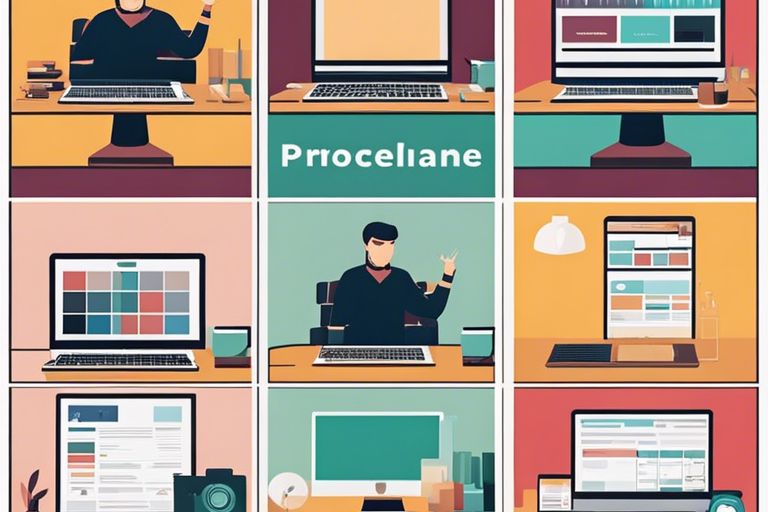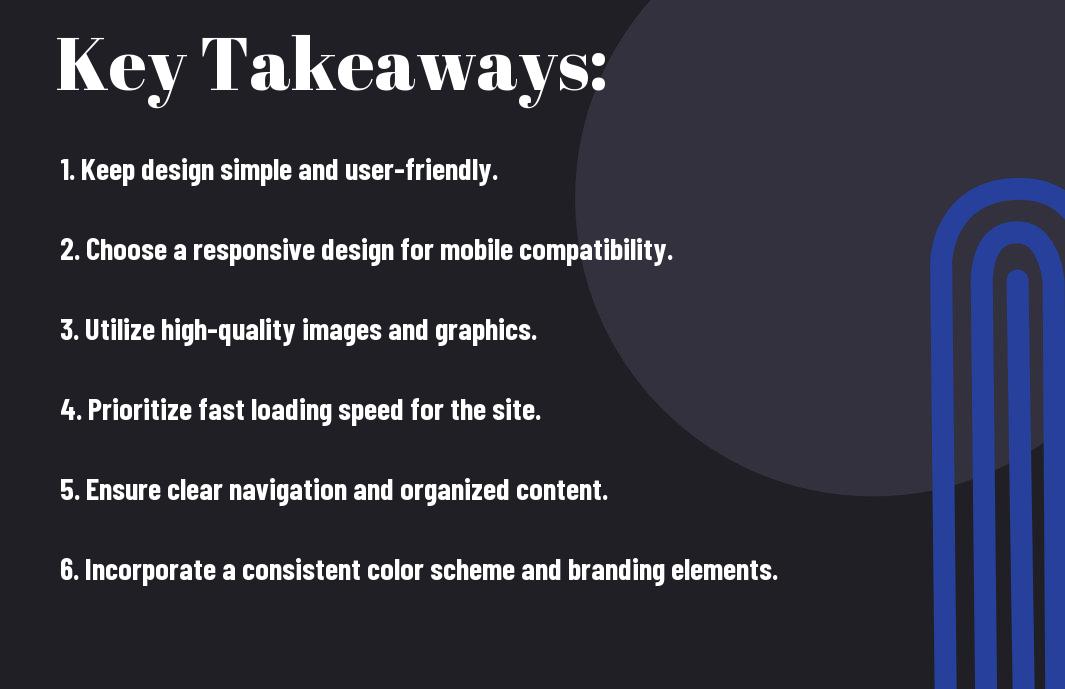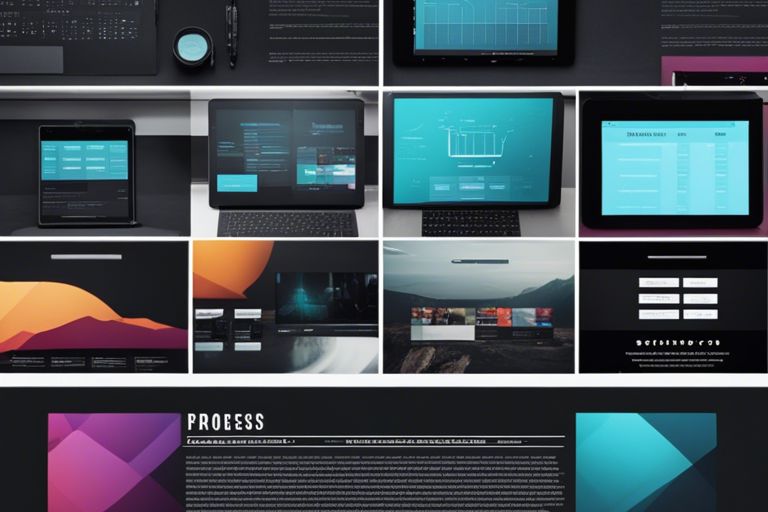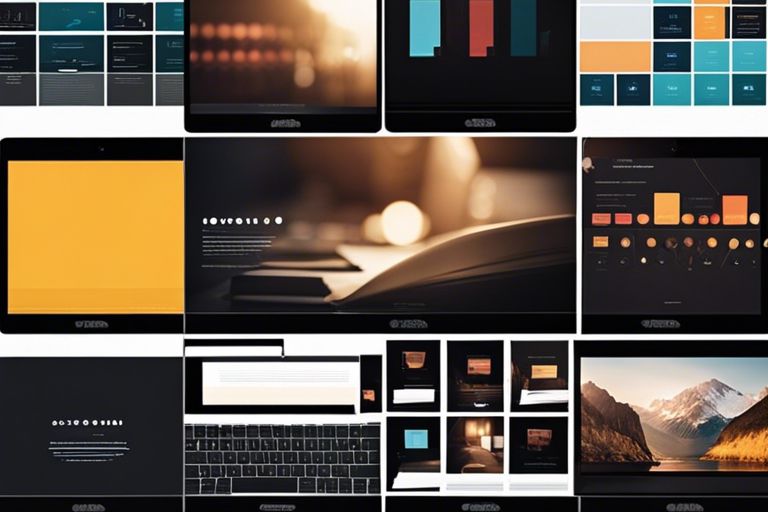Designing Your Own Website – Tips From A Freelance Web Designer

Why Partner With A Web Development Agency For Your Website Project?
April 22, 2024
Affordable Website Design – How To Find The Best Website Builders For Small Business
April 24, 2024Just commenceing on the journey of creating your website? As a freelance web designer with years of experience, I have crafted key tips that will help you navigate the world of web design with ease. From choosing the right color scheme to optimizing for mobile, I will guide you through the most crucial aspects of designing a website. Avoid the pitfalls that many novices encounter and learn how to engage your audience effectively. Get ready to elevate your online presence with these proven strategies straight from the field of freelance web design.
Key Takeaways:
- Plan your website structure: Organize your website content in a clear and logical way to ensure easy navigation for users.
- Choose a consistent design: Use a cohesive color scheme, typography, and imagery throughout your website for a professional and polished look.
- Optimize for mobile: Make sure your website is responsive and mobile-friendly to provide a positive user experience across all devices.


Planning Your Site
Any successful website starts with a solid plan. Before entering into the design and development process, it’s crucial to take the time to plan out your site’s structure, content, and goals. Wondering what steps to follow when designing a website? Check out this Reddit thread for valuable insights from fellow web designers.
Defining Your Website’s Purpose
An important first step in planning your website is defining its purpose. What do you want your website to achieve? Is it to showcase your portfolio, sell products, provide information, or something else? Clearly outlining your website’s purpose will guide all future decisions regarding design and content.
Setting Goals and Objectives
The next step in planning your website is setting specific, measurable goals and objectives. Identify what you want to accomplish with your website, whether it’s increasing online sales, growing your email list, or boosting brand awareness. The more specific and measurable your goals are, the easier it will be to track your progress and make improvements.
Your goals should be SMART: Specific, Measurable, Achievable, Relevant, and Time-bound. For example, instead of a vague goal like “increase website traffic,” a SMART goal would be “increase website traffic by 20% in the next six months.”
Understanding Your Audience
Understanding your target audience is crucial for designing a website that resonates with your visitors. By knowing your audience’s demographics, interests, and needs, you can tailor your content and design to meet their expectations and provide a positive user experience.
Objectives. Conducting market research, creating user personas, and analyzing data from your existing website (if applicable) are valuable methods for gaining insights into your audience.
Objectives. By focusing on your audience’s preferences and behaviors, you can create a website that not only attracts visitors but also converts them into loyal customers or followers.

Design Basics
Choosing a Color Scheme
Color is a crucial element in web design as it sets the tone and evokes emotions from your visitors. When dicking out a color scheme for your website, consider the psychology behind colors and how they can influence the perception of your brand. It’s vital to choose a color palette that reflects your brand’s identity and resonates with your target audience.
The Role of Typography in Web Design
Designing a website involves more than just choosing colors and images. Typography plays a vital role in enhancing the readability and overall aesthetics of your website. The right font choices can convey your brand’s personality and improve the user experience. Make sure to select fonts that are easy to read on various devices and maintain consistency throughout your website.
Scheme: Consistency in font styles and sizes is crucial for maintaining a professional look on your website. Avoid using too many different fonts, as this can create a cluttered and confusing design.
Layout Principles and Responsive Design
Principles of layout design are vital for creating a visually appealing and user-friendly website. Consider the balance, alignment, and visual hierarchy of elements on each page. Responsive design is also critical to ensure your site looks great on all devices. Make sure your website layout adapts seamlessly to different screen sizes and resolutions for a positive user experience.
Another: When designing your website layout, prioritize the most important content and features to ensure they are easily accessible and prominent. Utilize white space effectively to enhance readability and create a clean, organized design.
Building Your Website
Selecting the Right Tools and Platforms
For a successful website, selecting the right tools and platforms is crucial. To start, consider your technical expertise and the complexity of the website you envision. Platforms like WordPress, Wix, or Squarespace offer user-friendly interfaces, templates, and plugins for customization. Alternatively, if you prefer more control and flexibility, coding from scratch or platforms like Joomla or Drupal may be suitable.
Adding Content: Text, Images, and Media
Your website’s content is the heart of your online presence. To engage visitors, create high-quality written content, captivating images, and relevant multimedia. Update your content regularly to keep it fresh and informative, showcasing your expertise and building credibility with your audience.
Selecting the right images and media that complement your text is crucial for an appealing website. Visuals can enhance the user experience and convey messages more effectively than text alone. However, ensure the media files are optimized for web use to maintain fast loading speeds and responsive design. User engagement and retention are influenced by the quality and relevance of your content, so prioritize creating a seamless and enjoyable browsing experience.

Going Live and Beyond
Testing Your Website Before Launch
Before your website goes live, it’s crucial to extensively test it to ensure a smooth user experience. Check for broken links, test forms and interactive elements, and make sure your website is mobile-responsive. Addressing any issues before launch will help prevent problems that could turn away visitors.
SEO Best Practices and Online Visibility
Your website’s SEO is vital for online visibility. Ensure your website is optimized for search engines by incorporating relevant keywords, creating high-quality content, and optimizing meta tags. Additionally, consider implementing backlinks and promoting your website on social media to increase online visibility.
Best practices: Utilize Google Analytics to track your website’s performance, conduct keyword research to target the right audience, and regularly update your content to stay relevant in search engine rankings.
Maintenance and Updating Your Website
Your website requires regular maintenance to function optimally. Update plugins, security measures, and content to keep your website secure and up-to-date. Consistent monitoring and updates are crucial to ensure your website continues to perform well and remains protected from security threats.
Website maintenance: Implement regular backups of your website, monitor loading speeds, and conduct security audits to safeguard your website from potential threats. By staying proactive with maintenance, you can prevent major issues that could impact your website’s performance.
To wrap up
On the whole, designing your own website can be a challenging yet rewarding experience. Following the tips from a freelance web designer can help you create a site that not only looks great but also functions smoothly. Remember to keep your design clean and user-friendly, prioritize loading speed, and optimize for mobile devices. For more in-depth tips on web design for beginners, you can check out Web Design Tips for Beginners – Everything I Wish I Knew …. By staying informed and continuously refining your website, you can ensure that it stands out in the digital landscape.
FAQ
Q: Why is designing your own website important?
A: Designing your own website gives you control over the appearance, functionality, and messaging of your online presence. It allows you to create a unique identity that represents your brand or personal style.
Q: What are some tips for designing a user-friendly website?
A: To design a user-friendly website, consider factors such as clear navigation, responsive design for mobile users, fast loading times, and easy-to-read content. Also, make sure to test your website across different devices and browsers to ensure a consistent experience.
Q: How can I make my website visually appealing?
A: To make your website visually appealing, focus on choosing a cohesive color scheme, using high-quality images, incorporating white space for readability, and implementing a clean and modern design. Consistency in design elements such as fonts and images also contributes to a professional look.
Q: What are some key elements to include in website design?
A: Some key elements to include in website design are a clear and intuitive navigation menu, prominent calls-to-action, contact information, an about page to introduce yourself or your brand, and social media integration. Additionally, consider including testimonials or a portfolio to showcase your work or credibility.
Q: How can I optimize my website for search engines?
A: To optimize your website for search engines, focus on using relevant keywords in your website content and meta tags, optimizing images with alt text, creating quality backlinks, and improving website loading speed. Regularly updating your content and obtaining inbound links from reputable sources can also help improve your search engine ranking.


